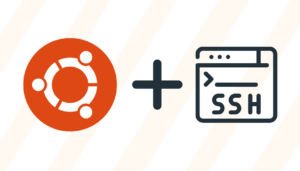Recent data shows Linux ransomware attacks have jumped by 75% between 2021 and 2022. Windows systems still remain the primary target for 90% of ransomware attacks. Linux systems face growing threats because they power 80% of web servers worldwide.
Businesses now face a daunting challenge as each ransomware attack costs an average of $1.4 million to fix. Linux’s widespread use makes it an appealing target for cybercriminals, since it runs 90% of public cloud workloads. Major ransomware groups have already proven their capabilities. RansomEXX has successfully targeted government systems, while LockBit’s operations have extracted more than $120 million through extortion.
This piece will help you understand how ransomware compromises Linux systems. You’ll learn about major attack patterns and get practical steps to strengthen your systems and recover from attacks. The information will help you build better defenses for your Linux infrastructure.

Understanding Linux Ransomware Attack Patterns
Linux ransomware attacks differ from Windows-based ones that spread through email. These attacks use complex techniques to breach systems. Latest data reveals Linux-targeted exploits jumped 130% in Q1 2024.
How Ransomware Targets Linux Systems
Modern Linux ransomware exploits vulnerabilities instead of using traditional phishing. The malware connects to command-and-control (C2) servers to download hidden executables after getting access. These executables copy themselves to local directories, usually the Temp folder. The original script then terminates itself.
The attack chain deploys webshells that work as backdoors. These let attackers keep access even after system reboots. Many Linux ransomware variants can also escalate privileges, which makes attacks more powerful and damaging.
Common Entry Points and Vulnerabilities
Critical vulnerability reports tripled in 2023 compared to the 2019-2022 average. The main ways attackers get in include:
- Unpatched system vulnerabilities and service flaws
- Misconfigured network settings
- Weak authentication practices
- Exposed services with SQL injection vulnerabilities
- Outdated applications and incomplete patch management
Attackers now target ESXi virtualization systems more often. Taking over one ESXi server lets them hit multiple virtualized services at once.
Linux-specific Encryption Methods
Linux ransomware uses unique encryption methods to lock systems. Most variants use AES encryption, with ChaCha20 as the popular alternative. RSA remains the top choice in ransomware families of all types for asymmetric encryption.
The encryption starts when ransomware talks to its C2 server to get a public key. It creates a random symmetric key to encrypt target files. The ransomware deletes original files permanently after encryption. It then places ransom notes throughout affected directories.
Today’s Linux ransomware shows patience. The malware waits if network or cloud storage becomes temporarily unavailable. This smart approach helps it cause maximum damage to the compromised infrastructure.
Recent studies show a shift toward simpler ransomware that only encrypts files. This basic approach makes detection harder because the malicious code looks like normal encryption operations. The lack of complex communication protocols or system preparation commands makes it even tougher to spot these attacks.
Technical Analysis of Major Linux Ransomware
A close look at major Linux ransomware shows sophisticated coding patterns and attack methods that set them apart from traditional Windows-based threats. Our analysis of well-known ransomware families reveals their technical complexities and how they work.
RansomEXX Code Analysis
The first version of RansomEXX appeared as a 64-bit ELF executable that shows impressive technical sophistication. This ransomware uses the open-source library mbedtls for its cryptographic operations. The system creates a 256-bit key for file encryption with the AES block cipher in ECB mode when it runs.
The malware’s core features are:
- A thread-based key regeneration system that updates the encryption key every second
- Embedded RSA-4096 public key to secure the AES key
- Custom file extension appending based on victim identification
The Linux version has simplified features compared to its Windows counterpart and skips common elements like process termination and security software disruption. The code structure shows significant similarities between both versions, which points to shared source code.
BlackCat Attack Chain Study
BlackCat (ALPHV) represents the next step in Linux ransomware design. Built with Rust, this malware delivers better performance and reliable parallel processing. The ransomware’s technical design has several advanced components.
BlackCat uses stolen credentials to break into Active Directory environments. Once inside, the malware sets up remote access tools like AnyDesk and Splashtop to steal data.
The attack happens in clear stages:
- Initial Access: Uses advanced social engineering and builds custom victim-specific communication channels
- Lateral Movement: Creates Kerberos tokens and sets up specialized admin accounts
- Persistence: Sets up Brute Ratel C4 and Cobalt Strike beacons to keep control
A newer addition to BlackCat’s toolkit is the Munchkin tool that runs through virtual machines for stealth. This custom Alpine OS Linux distribution comes with:
- Password dumping capabilities
- Network lateral movement
- Custom encryption payload generation
- Remote program execution
The malware’s building-block design uses various Python scripts and adjustable components to target specific systems precisely. The 2023 Sphynx update brought better defense evasion and more tools for both Windows and Linux systems.
The technical design focuses on stealth through virtual machine isolation, which makes it hard for security solutions to detect. The choice of Alpine OS leaves minimal digital traces, which reduces the chances of detection during setup and execution.
RansomEXX and BlackCat represent the growing complexity of Linux ransomware. Each uses unique technical approaches to reach their goals. Their analysis shows a clear shift toward complex, multi-staged attacks that use advanced programming languages and sophisticated deployment methods to avoid detection while causing maximum damage.
Linux System Hardening Against Ransomware
Linux systems need multiple layers of defensive measures to stay protected against ransomware. Organizations can reduce their ransomware attack risks by a lot through proper system configuration and constant monitoring.
File System Access Controls
The first line of defense starts with limiting mount point permissions. System administrators should implement “noexec” and “nosuid” mount options for temporary storage locations like /tmp, /var/tmp, and dev/shm. These options stop malicious binaries from running. The /etc/fstab file should contain these restrictions to maintain them after system reboots.
SELinux and AppArmor are vital Mandatory Access Control (MAC) mechanisms. SELinux works in three different modes:
- Enforcing: Blocks unauthorized actions right away
- Permissive: Records violations without blocking them
- Disabled: Turns off security policy enforcement
AppArmor takes a different path by using file paths instead of security contexts to apply MAC rules. This tool watches application behavior patterns and flags any unusual changes.
Process Monitoring Setup
Live threat detection relies heavily on process monitoring. Advanced Intrusion Detection Environment (AIDE) creates file checksums and alerts administrators when unauthorized changes occur.
A solid process oversight system needs these key parts:
- System-wide process tracking with auditd
- Process accounting to log execution details
- Resource usage tracking through cgroups
- EDR solutions deployment
Staged Event-Driven Access Control (SEDAC) blends program-centric and accessible access control measures. This combined approach lets only authorized processes use sensitive system resources.
Network Traffic Analysis
Network monitoring helps stop ransomware from spreading. Live analysis can spot command-and-control (C2) communications, data theft attempts, and strange encryption patterns.
Setting up network monitoring requires three steps:
Wireshark deployment comes first for deep network activity inspection. Suricata follows to detect threats and send alerts automatically. Network probes complete the setup by capturing traffic patterns, which helps detect ransomware activity within 20 seconds.
Network security becomes stronger with these measures:
- TCP Wrappers service setup
- Both /etc/hosts.allow whitelist and /etc/hosts.deny blacklist configuration
- Iptables with “Deny All” policy for IPv4 and IPv6 traffic
- ICMP traffic blocking to stop ping-based reconnaissance
ClamAV antivirus should scan shared folder environments to reduce ransomware spread across different operating systems. On top of that, Protective Domain Name System (DNS) services block malicious internet activity at its source, which gives remote workers better security.
Real-time Ransomware Detection Methods
Real-life ransomware attack detection needs sophisticated monitoring systems that analyze system behavior and spot malicious patterns. Security teams now combine system-level analysis with advanced behavioral monitoring to catch ransomware before it causes major damage.
System Call Monitoring
System calls are the core indicators of ransomware activity that help us learn about program operations at the kernel level. Security systems can spot suspicious patterns through careful analysis of these calls, which often point to encryption attempts or unauthorized file access.
The extended Berkeley Packet Filter (eBPF) is a great tool to analyze system calls. It lets programs run within the operating system kernel without changing source code. This tool is essential because it:
- Captures different events using kernel probes
- Monitors selected system calls
- Counts events triggered by various processes
- Filters data based on directory paths or process IDs
Background processes create a huge volume of information, which is the biggest problem in system call monitoring. Operations like clock_gettime() create large logs that can hide critical data. Advanced filtering techniques help by grouping system calls into specific categories and removing unrelated processes through process tree analysis.
Recent systems show that combining eBPF with Machine Learning algorithms boosts detection capabilities. These systems keep track of key events such as:
- File permissions and operations
- Inode creation and deletion
- Directory enumeration
- Virtual file system read/write activities
Behavioral Analysis Tools
Behavior-based detection methods compare new activities with historical data patterns to find indicators of compromise. These tools look at three main aspects:
File system changes come first on the watchlist. The system flags unusual file executions and focuses on mass file renames that happen quickly. Security tools calculate Shannon entropy and Pearson’s goodness-of-fit metrics for write operations to spot potential encryption activities.
Data traffic analysis comes next by watching network connections for suspicious patterns. This method works well since ransomware needs continuous connection to exchange decryption keys and get command-and-control instructions. But we need thorough analysis because attackers might use legitimate file-sharing sites, leading to false alarms.
API call examination is the third aspect that reveals suspicious commands or normal operations running in unusual amounts. To name just one example, many ransomware variants use GetTickCount to check system uptime, which helps them detect virtual machine environments. Spyware and keyloggers often use GetWindowDC to capture window information.
Deception-based detection works well by placing “bait” files in visible network locations. These honeypots serve two purposes:
- Luring attackers to reveal their methods
- Triggering alarms when encryption attempts occur
Over the last several years, behavioral analysis has improved with Machine Learning models running directly in eBPF. This reduces latency without affecting accuracy. These new systems perform much better than traditional user-space versions while staying precise in threat detection.
Step-by-Step Linux Ransomware Recovery
A quick response to a Linux ransomware attack needs a methodical approach that focuses on containment, recovery, and system restoration. Organizations can reduce data loss and keep operations running smoothly with proper execution.
Original Containment Steps
Ransomware activity detection requires immediate system isolation to stop its spread across networks. Teams should disconnect infected computers, servers, and virtual environments from shared storage and cloud environments. System images and volatile memory contents from compromised devices need to be captured to help forensic investigation.
Essential containment actions include:
- Network interface disabling to cut external connections
- Volatile information preservation from system memory
- Security logs and firewall buffer protection
- Documentation of all compromise indicators
Data Recovery Process
Data recovery success depends on backup strategies set before the attack happens. Companies that run regular, automated offline backups recover faster. Teams should check backup copies made before the infection date and study file dates and relevant messages.
The restoration needs these key steps:
Backup integrity checks must happen in secure quarantine testing to avoid reinfection. Cloud-based backups in services like AWS S3 need Object Lock protection against tampering. Federal law enforcement and security vendors might have decryption tools worth exploring.
System Restoration Checklist
System restoration needs careful planning to prevent reinfection. Storage devices must get complete formatting to remove ransomware traces. Here are the key restoration steps:
- Clean image and trusted program source system rebuilds
- Security patches and configuration changes
- Ransomware monitoring solution deployment
- Post-incident evaluation completion
Systems should come online gradually with deep scans for hidden malicious code. Response team members need clear communication channels to coordinate restoration work effectively.
CDP (Continuous Data Protection) capabilities help create precise recovery points. Organizations can pick exact restoration timestamps and minimize data loss during recovery.
Latest research shows 63% of organizations restore systems into compromised environments without proper scanning. Good security policies prevent data exposure risks. A structured recovery approach helps restore operations and builds stronger defenses against future attacks.
Conclusion
Linux ransomware threats continue to pose bigger challenges for organizations around the world. This piece explores complex attack patterns and shows how modern ransomware uses advanced encryption to target Linux systems.
Major ransomware variants like RansomEXX and BlackCat show remarkable technical progress. They use advanced programming languages and multi-staged attacks that make them harder to spot. These threats need reliable defensive measures at every system level.
System hardening plays a vital role. You need strict file system controls, complete process monitoring, and detailed network traffic analysis. Immediate detection methods give you early warnings against ransomware activities. System call monitoring and behavioral analysis tools work best.
Your organization should have tested backup strategies and recovery procedures ready. Quick containment and systematic restoration help reduce the effect of attacks. The recovery time also goes down by a lot.
Linux ransomware attacks will get more complex. They will target critical infrastructure and cloud environments more often. Your Linux systems need proactive security measures, non-stop monitoring, and regular updates to stay protected against these growing threats.




